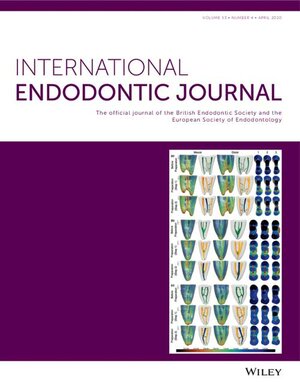Fully guided system for position-predictable autotransplantation of teeth: A randomized clinical trial
Abstract
Aim
Autotransplantation of teeth (ATT) is a viable biological method for addressing dental defects. The objective was to achieve occlusal reconstruction-orientated ATT to enhance functionality and obtain optimal location and adjacency. This study proposes a new concept of a guide (a fully guided system) to achieve position-predictable ATT.
Methodology
This study included 30 transplants in 29 patients who were randomly divided into two groups during the initial examination using a single-blind method. The experimental group comprised 15 transplants in 14 patients who underwent surgery using a fully guided system. Fifteen transplants were performed on 15 patients in the control group using only a replica.
Results
The mean number of repeated teeth autotransplantation attempts and mean preparation time exhibited no significant differences. The mean follow-up period was 1 year. Twenty-six transplants were followed up clinically, while four were only followed up by phone calls. The experimental group demonstrated a 100% success rate, whereas the control group exhibited a 70% success rate, with an overall 100% survival rate. 3D analysis: Deviation of both angle and distance was calculated for evaluation of accuracy. The mean centre deviation of teeth in experiment group was 0.79 mm (95% confidence interval [CI], 0.51–1.08) compared to 1.79 mm (95% CI, 1.10–2.47) in control group (p < .05). The mean of average index points distance deviation showed a significant difference. The mean angle deviation of long axis in experiment group was 3.87° (95% CI, 2.25–5.49) compared to 12.98° (95% CI, 8.64–17.31) in control group (p < .05). The angle deviation of long axis in mesio-distal direction, buccal-lingual direction and rotation showed a significant difference also.
Conclusions
The results of the analysis indicated that the fully guided system increased the predictability of achieving an ideal transplant position with intuitive data, establishing a solid foundation for optimal dental functional recovery and restoration. However, this study had limitations regarding the generalisability of the design of the optimal location for transplantation and the equipment requirements for clinical procedures. Therefore, further research on the screening of indications for guided systems and location planning is necessary.
Clinical Trial Registration
This study was registered on the Chinese Clinical Trial Registry (Registration Number: ChiCTR 2300074646).

 求助内容:
求助内容: 应助结果提醒方式:
应助结果提醒方式:


